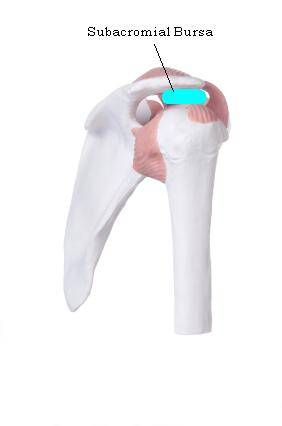Shoulder Pain
Many patients come to our clinic believing they have shoulder bursitis. Shoulder bursitis is a condition in which the bursa of the shoulder gets inflamed and generates pain. What is a bursa you ask? Let’s start from the beginning…
Bursa and Bursitis
Bursa are anatomical structures that are present throughout our body. A simple way to explain them is that they are “spacers” to separate different tissues in our body to prevent friction…think of a balloon filled with pudding. Under normal circumstances we don’t even know we have them. They are present in our shoulders, knees, hips (and other major joints) and they usually don’t cause any symptoms or signs of dysfunction. When provoked, these structures can become inflamed. When this happens they swell with fluid and create the painful condition called “bursitis”.
Shoulder Bursitis
Most forms of bursitis are not visible but some can be. In these cases, you might actually see an area of collected fluid which correlates with the painful area. Keep in mind that bursitis doesn’t have to be painful though! In the most common case of shoulder bursitis, the bursa underneath the acromion (the pointy bone on top of your shoulder) gets inflamed. This is called subacromial bursitis. Since there isn’t a lot of extra space in that area to begin with, things get compressed. This is usually painful.
Symptoms of Shoulder Bursitis
A broad area of pain in the shoulder is common for shoulder bursitis. It usually doesn’t involve a specific point area of tenderness, but rather a “spread out” ache. Shoulder bursitis is usually aggravated with overhead activity, compression (like lying on that shoulder) and excessive use. Diagnostic ultrasound and MRI can be helpful in determining whether there is swelling in the bursa.
Treatment of Shoulder Bursitis
There are various treatments for shoulder bursitis. Anti-inflammatory or cortisone injections can be provided by a medical professional. Consistent with the literature, our clinic offers conservative treatment options through our chiropractors and physiotherapists. This avenue of treatment involves various treatment modalities like laser therapy, interferential current, manual treatment (like active release on surrounding tissues), acupuncture and rehabilitative exercise. The treatment that is right for you can depend on many different factors, such as the duration of symptoms and treatment approaches that have already been tried. Unsure what to do? Feel free to give us a call or email us at [email protected].









